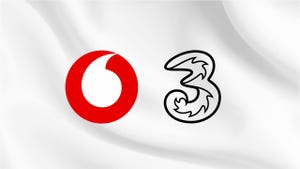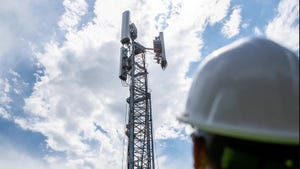Motorola enters premium 5G bracket, but does it have the brand to justify a grand?
Lenovo-owned Motorola has announced the launch of its first 5G phone, coming in towards the top-end of the pricing scale at $999 in North America and €1,199 in Europe.
April 23, 2020

Lenovo-owned Motorola has announced the launch of its first 5G phone, coming in towards the top-end of the pricing scale at $999 in North America and €1,199 in Europe.
The Motorola Edge+ will be available in North America in the coming weeks before heading across the Atlantic in the months following. What is worth noting is the device will not be made available in the UK for some reason.
While the specifications are as you would expect for a flagship device, the pricing point is somewhat of an interesting element. There will be a cheaper device, the Motorola Edge, for the mid-tier markets, though the Edge+ pushes Motorola into the premium price bracket and into competition with the likes of Huawei, Apple and Samsung.
For those who keep a closer eye on the smartphone segment, this might be somewhat of an unusual move. The Z Series produced popular devices in the mid-tier market, though Motorola now seems to believe it can upgrade from this niche and compete with the big boys on the premium stage.
This is a risk for Motorola, as while the device might have the specifications to line-up against the more popular premium brands, one would question whether it has the brand reputation to ask for the majority of a customer’s monthly payslip.
To charge north of a grand for a smartphone, a firm needs to offer much more than a swish and sleek device. Apple, Samsung and Huawei are not necessarily successful because they have the best devices, but the marketing campaigns to cultivate a loyal following of customers is key. These brands are an experience, not a product, and this cannot be created overnight.
Apple is the king when it comes to creating a brand experience, as its customers could be likened to cultists more than anything, vehemently defending Safari, iOS and iMessage while queueing up for hours outside the Apple Store to be one of the first to purchase the new eye-wateringly expensive flagship device.
In China, Huawei has a similar status. It is seen as a technological champion, representing China on the global stage, even being the subject of a children’s song with patriotic lyrics. Market share statistics demonstrate how popular the device is in its domestic market, where is and other Chinese brands are crushing the international competition.
This is what is perhaps required to justify the expenditure of flagship devices today; a brand reputation which commands disciples, created through years of carefully crafted marketing messages and fantastical advertising campaigns. Think back to the ‘I’m a mac, and I’m a PC’ advertising campaign in the 90s. Mobile devices were not the focal point, but it was a marketing blitz which built the Apple brand as a company designed for creatives and innovators.
These campaigns and perceptions take years to establish. Huawei is an excellent example; it did not become a premium brand overnight but built campaigns which lasted years. These included high-profile sponsorships with numerous football teams throughout Europe, a brand partnership with Porsche, as well as celebrity endorsements from the likes of Henry Cavill and Scarlett Johansson.
This is where Motorola might struggle over the coming months. It might be able to convince customers to purchase the Edge device but spending an additional $400-odd for the Edge+ might be a step too far. It appears Motorola is trying to break into the premium space without doing any of the groundwork beforehand. This is a market which is about much more than device quality, and we don’t think the Motorola team has grasped that.
About the Author(s)
You May Also Like











_1.jpg?width=300&auto=webp&quality=80&disable=upscale)


.png?width=800&auto=webp&quality=80&disable=upscale)